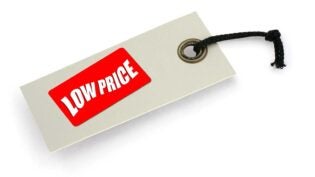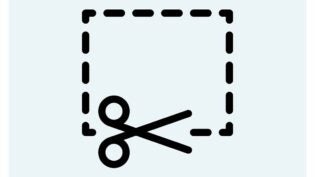
Sales people seem to be obsessed with negotiation. They read books, they take all sorts of classes, they strategize “negotiation” sessions. Oddly, when I push on the negotiation issue, most negotiations that sales people focus on are about price.
Don’t get me wrong, I’ve been involved in a lot of very complex negotiations for very complex deals and projects. Price is always an element, but there are a whole number of other elements—actually usually focused on ensuring each party has thought through things and is committed to shared success. There are lots of scenarios that require very complex negotiations, but for most of us, our “negotiations” don’t fall into this category. But sales people obsess over the negotiation—and it’s really an obsession about price. I’ve never quite gotten it.
I think one of the reasons we obsess over negotiation, is that we have set ourselves up for tough negotiations long before anybody steps up to the table. We leave the customer and ourselves with nothing to talk about but price. We leave our customer in the position that the only differentiation between alternatives is price. Our customer is indifferent to the solution.
And it’s our failure that puts both the customer and us in that position.
We do this by not creating and quantifying a high value to the outcomes the customer is trying to achieve. In the selling process we’ve focused on convincing the customer about our product/solution, not the business results they achieve of the business results they would forego by not making a change.
We’ve failed to differentiate our offerings from the competition. Sure, our product has a few more features and functions and we’ve made sure to remind the customer constantly about those. But we’ve failed to demonstrate how our solution can help the customer achieve things they could not achieve with any other solution. We haven’t even gotten to the discussion that the competition “claims” to produce the same outcomes, because we continue to focus on differentiating the product. We haven’t differentiated the outcomes or the customer’s ability to achieve those outcomes with anyone but us.
We’ve failed to provide leadership through the customer’s buying process. Challenging them, getting them to think differently, helping them understand issues they may not of have considered, ask questions they may not have been aware of, helping them understand what they don’t know, helping them identify potential problems and avoid them. We haven’t made ourselves indispensable in their buying process, instead becoming easily substituted in the implementation.
By failing to do the right things and get the customer to focus on the right things through the buying process, we arrive at the negotiating table with little to talk about—but price. Each alternative is perceived as roughly the same, one vendor blends into the other, rather than standing out. The only way to choose is price.
It’s not the customer’s job to do this stuff. It’s our job! If we don’t, we set ourselves up for potential failure, or at least have an outcome that is less than what we want.
Win-win is critical in negotiation. But we don’t create win-win at the negotiation table, we create it long before. When we sit down at the table, the customer knows they can’t achieve their desired outcomes without us—no alternative comes close. They customer knows the business results they will receive—quantitatively and qualitatively. The customer know that every hour or day spent in “negotiation” (by this I mean quibbling over price), the defer their ability to achieve those results—or worst, put it at risk. What else is there to do but sign the agreement and move forward to produce the results?
Now, I can hear the shouts, “But Dave, you are being naïve and unrealistic, we have to negotiate, we have to arrive at agreement.”
Absolutely! But hopefully, we’ve been building that agreement through the whole buying process. Hopefully we have shared agreement on the desired outcomes. Hopefully, we’ve identified the risks and challenges together, developing an implementation plan that addresses those. Hopefully, we’ve identified and addressed all the issues that impact our ability to achieve shared success. These are all critical, but they really need to be solved before we get to the negotiation table.
But you’re still saying, “Dave, you are being naïve about price!”
Well if we’ve done our job, we can look the customer in the eye and state, “Do you mean that you want to defer your ability to produce the results you expect, to put your ability to achieve them at risk, in order to save a few dollars?” Last week, I coached a sales person in a small negotiation, but nonetheless important. She had done a great job in understanding and articulating the business value. Likewise, she created compelling differentiation—the customer really wanted her solution. The negotiation was very simple, she made the statement, “Do you want to defer your ability to save $14,400 a year for the next several years, as well as meet your project deadlines to save $186 for my product?” You know the outcome.
Negotiations can be very difficult. Price is an element of every negotiation. But don’t make it more difficult than it need be. Make sure you are doing the right things with your customer far in advance of sitting down at the table.
This post was written as part of the IBM for Midsize Business program, which provides midsize businesses with the tools, expertise and solutions they need to become engines of a smarter planet. I’ve been compensated to contribute to this program, but the opinions expressed in this post are my own and don’t necessarily represent IBM’s positions, strategies or opinions.
This article was originally published by Partners in Excellence
Published: April 18, 2014
3523 Views
3523 Views











